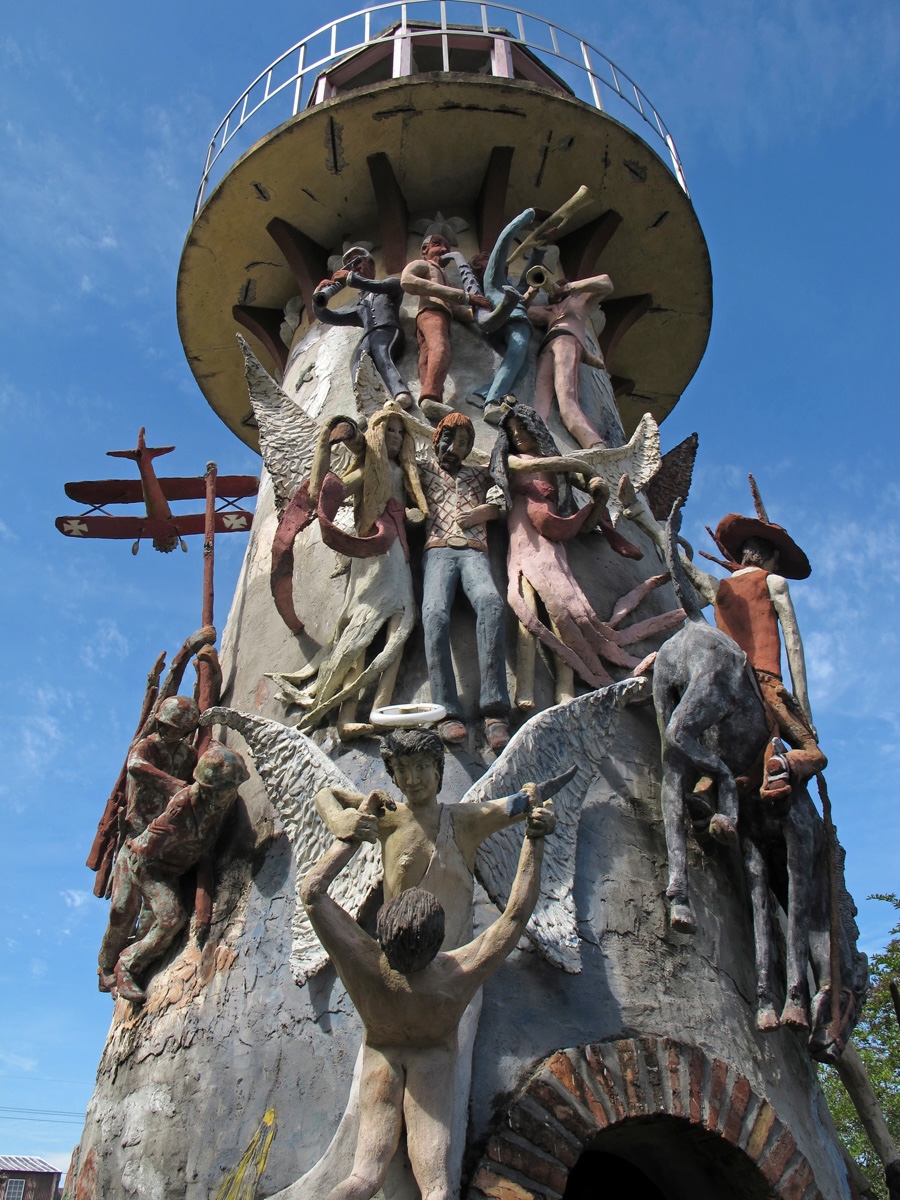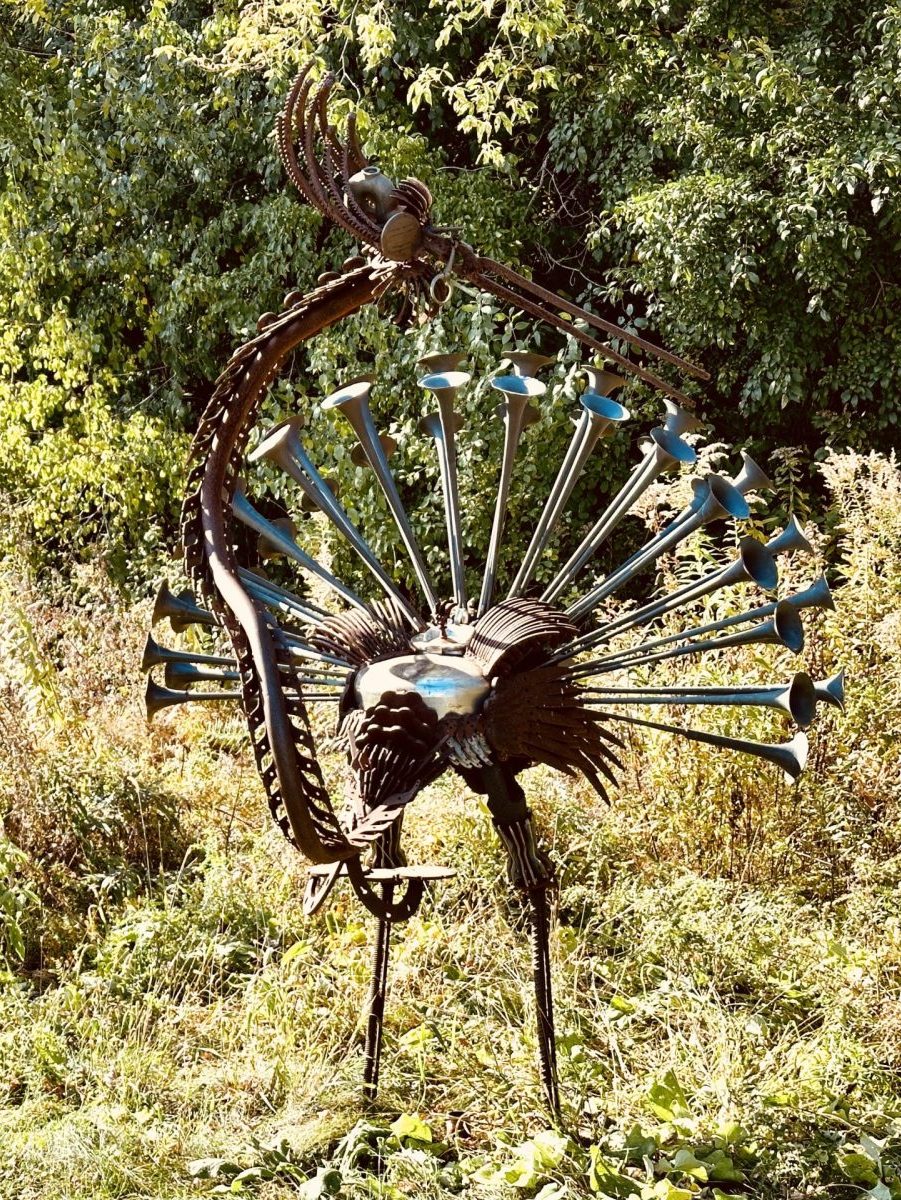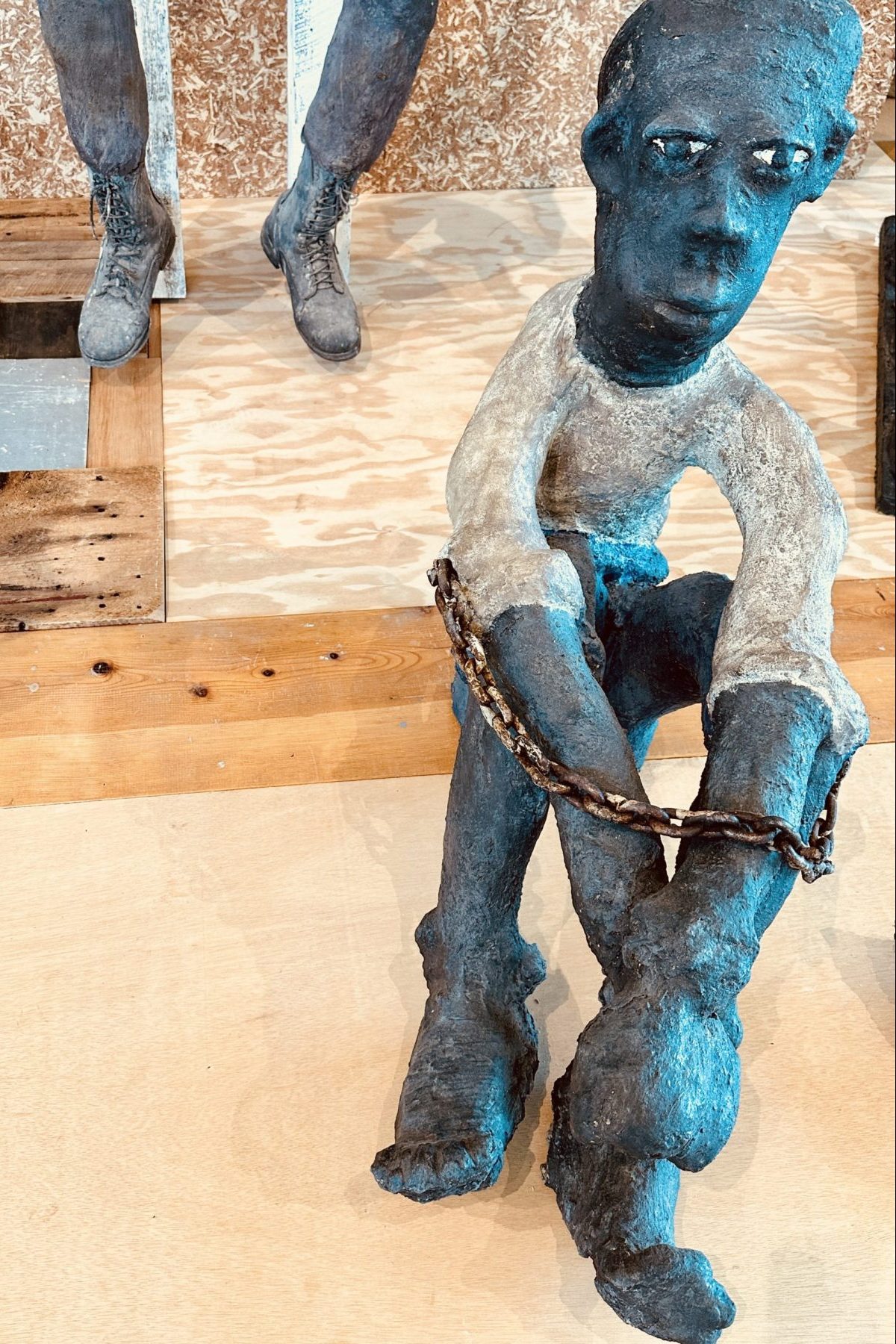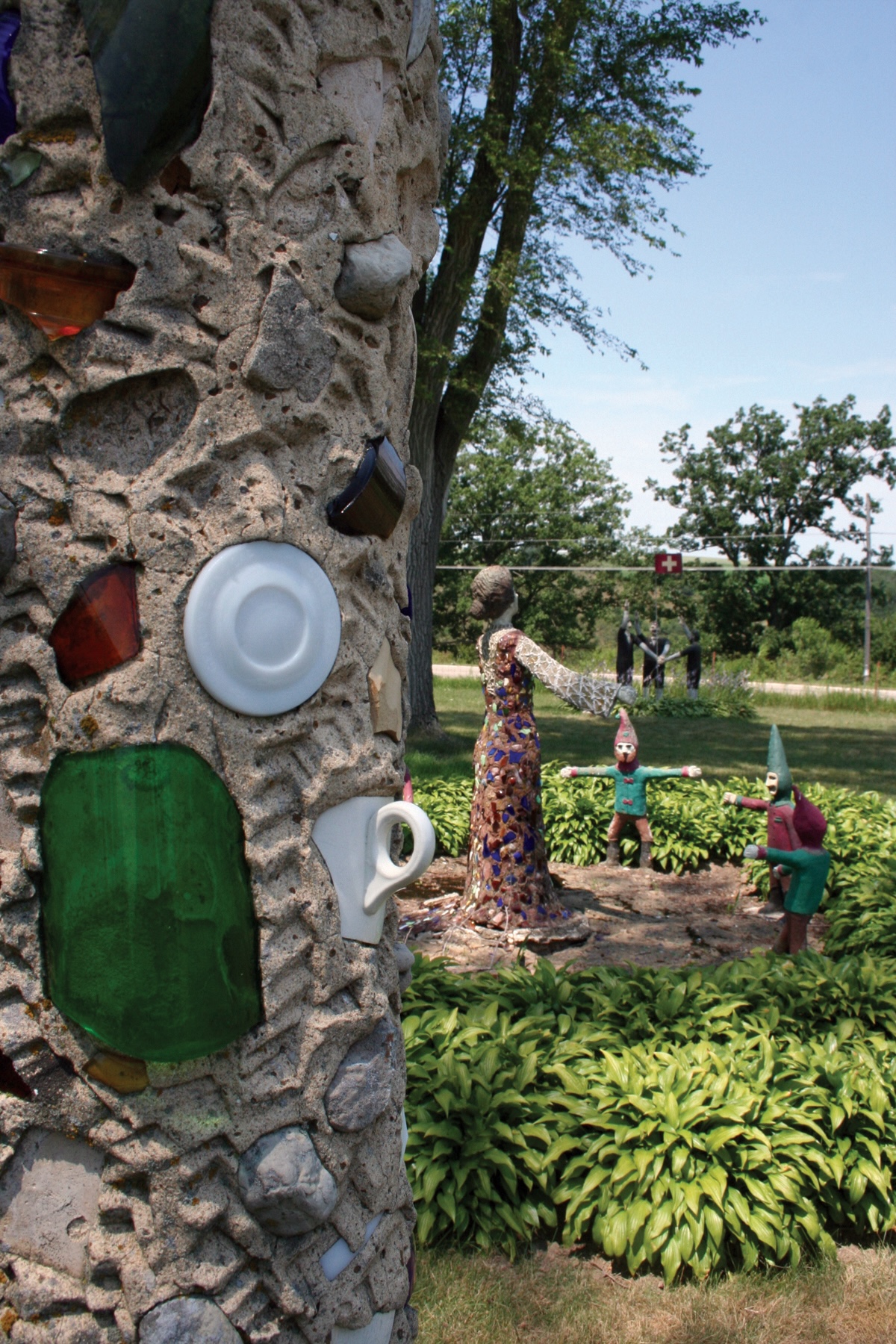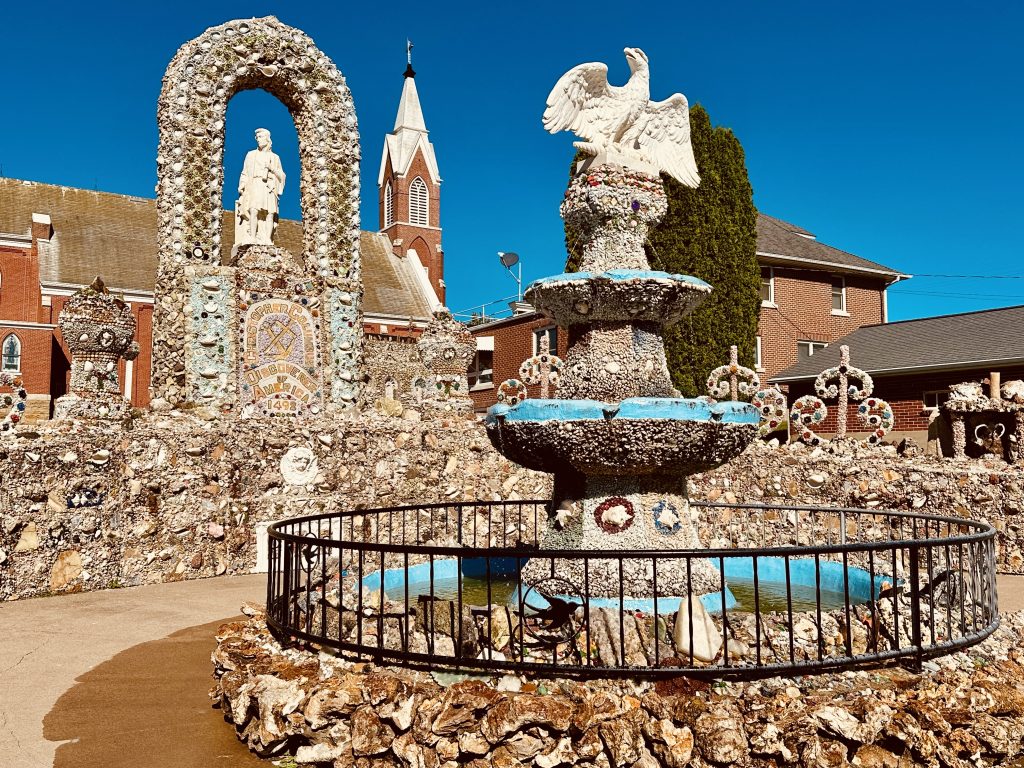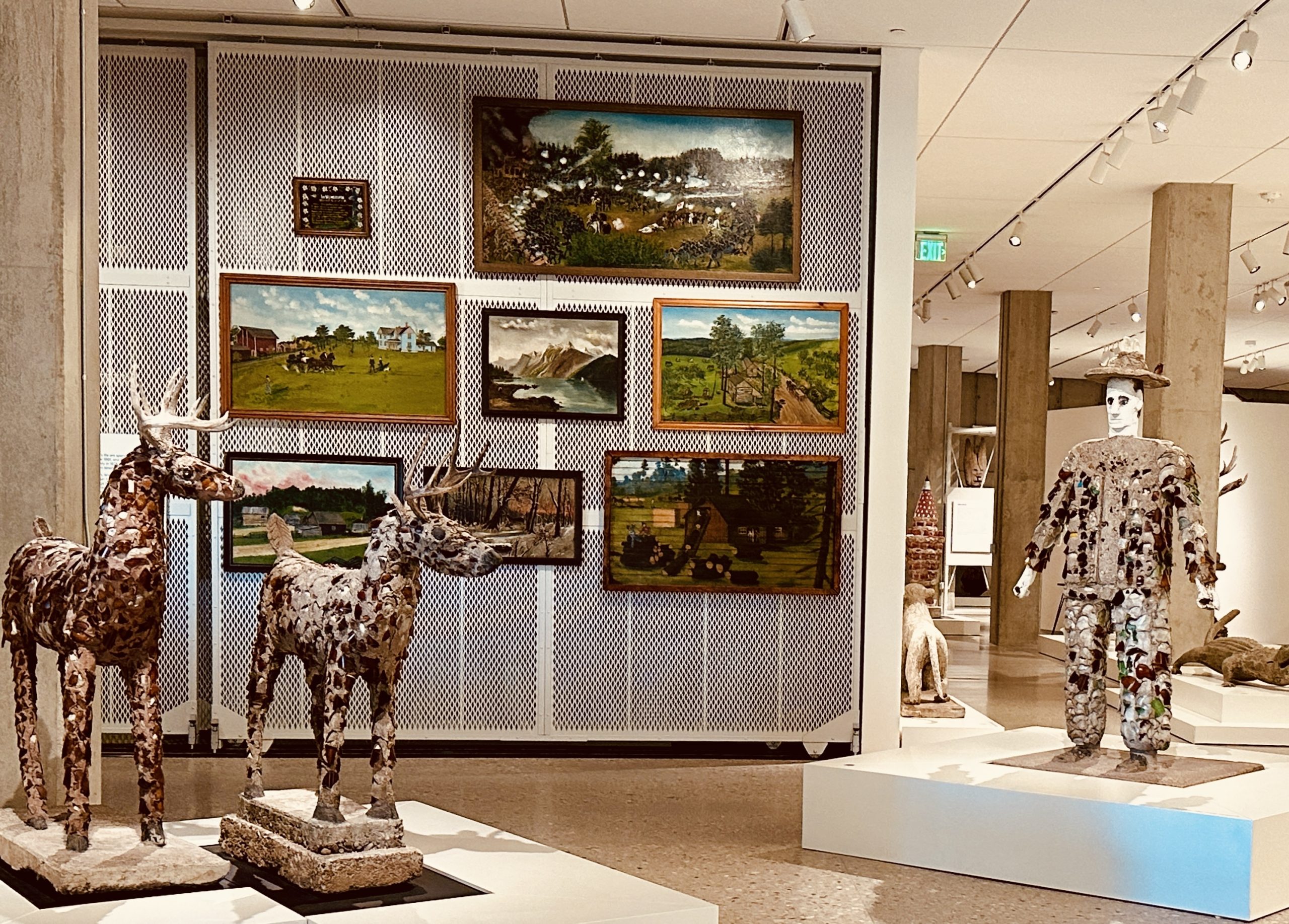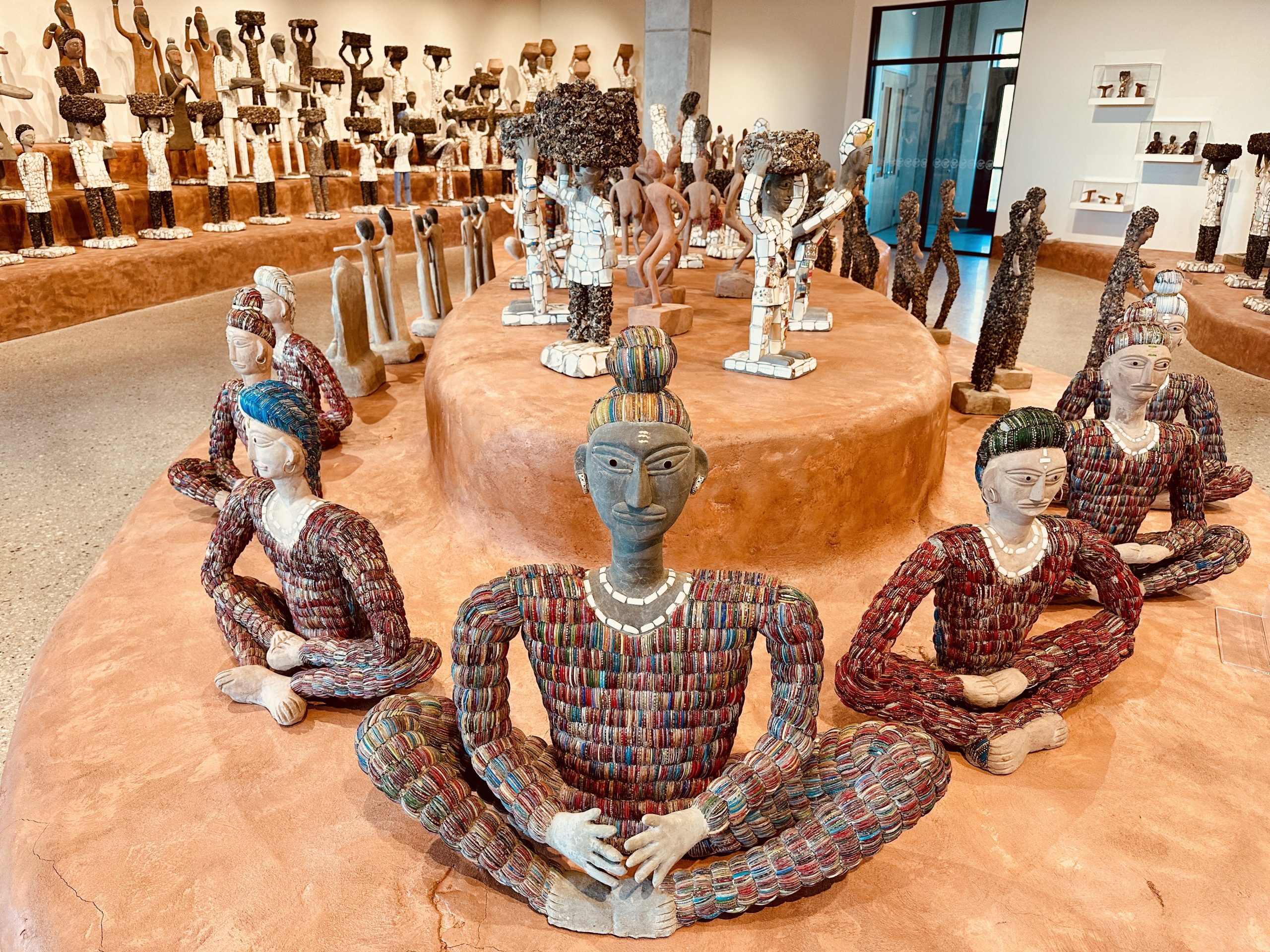A retired lumberjack in far-north Wisconsin, Vietnam veteran in Illinois, road inspector in India, brick layer in Louisiana and monk in Alabama had at least three things in common.
- Each became obsessed with creating an array of unusual sculptures to interpret the world as they experienced or envisioned it.
- None was trained to be an artist.
- Although the average person might dismiss their efforts as crude or strange, a Wisconsin foundation recognized value in these extensive, impromptu collections as art worth saving and celebrating.
Kohler Foundation, established in 1940, has made art environments, folk architecture and the work of self-taught artists a priority since the 1970s. The nonprofit identifies environments with artistic value, pays for their preservation and then typically gives the sites to long-term stewards to maintain.
If it’s not prudent to keep a collection at its original location, the foundation places the restored sculptures with museums and institutes of higher education.
Nicholls State University was given the Chauvin Sculpture Garden in 2002, two years after its creator – Kenny Hill, a bricklayer and recluse – disappeared. He had produced 60 concrete sculptures, not including a 45-foot-tall lighthouse of bricks, deep in Louisiana’s bayou.
The foundation has saved the legacy of dozens of people such as Kenny Hill.
Also known as “outsider art,” many of the art environments are made of concrete embellished with paint and/or castoff materials (think broken shards of glass, colorful stones, shells, marbles, eating utensils and whatever else might be within reach).
One artist might create life-sized or bigger-than-life sculptures of animals, people, religious or mythical creatures. Another’s sculptures might be miniatures, built with odd materials, such as chicken bones.
Count Wisconsin Concrete Park and its 200-plus concrete sculptures among the foundation’s first major rescue projects. Retired and illiterate lumberjack Fred Smith of rural Phillips, Wisconsin, began his work in 1948 and continued 15 years, until a stroke changed his life.
“Nobody knows why I made them, not even me,” he reportedly said. “This work just came to me naturally.” Since 1995, Friends of Fred Smith Inc. oversees park maintenance.
“Kohler Foundation’s decades-long and ongoing preservation of artist-built environments is unprecedented,” says Lisa Stone, who has taught art-environment classes at School of the Art Institute of Chicago. She began studying the genre in 1981 and is considered an expert on the topic.
She credits “the magnanimous vision” of the late Ruth De Young Kohler II, who championed the cause and helped identify projects worth preserving.
The Kohler matriarch’s work continues. In 2023, the foundation completed two preservation projects.
- Century-old Dickeyville Grotto, in southwest Wisconsin, was the work of Father Mathias Wernerus. “This site was the motivation for much of the grotto and environment building that took place in the last century throughout the Midwest,” says Liesl Testwuide, the foundation’s senior manager for art preservation.
- In Niagara Falls, N.Y., Prophet Isaiah’s Second Coming House, the vision of a Jamaican native, is anchored by a 25-foot cross of wood that is covered with symbols of religious prophesy. Those embellishments covered the inside and outside of his house too, and the site became part of Niagara Falls National Heritage Area.
Under way is work on the Ave Maria Grotto in northern Alabama, on the grounds of St. Bernard Abbey. The site – depicting holy sites from around the world – is the work of German-born Joseph Zoetl, a monk at the abbey for nearly 70 years.
“He created his final piece, a miniature Lourdes Basilica church, in 1958 at the age of 80,” Testwuide says. At least 150 structures are part of the grotto, which attracts 20,000-some visitors annually.
Restoration work is expected to be complete in 2026, when the site will be turned over to the Brother Joseph Zoetl Heritage Foundation.
In 2021, Art Preserve opened between Sheboygan and Kohler, Wisconsin, as the world’s first museum devoted to artist-built environments. Stories of many of the foundation’s preservation projects are told here, through text and samples of works saved and restored.
Two collections anchor the third floor of this museum, which is a satellite campus of John Michael Kohler Art Center, Sheboygan. Admission to both facilities is free.
- One hundred sixty sculptures of concrete and fabric by Nek Chand, a road inspector in India, are here. Chand’s 40-acre Rock Garden in the Himalayan foothills is a major tourist attraction in India.
- More than 200 of Dr. Charles Smith’s 500-plus sculptures are here, each depicting the struggle of African Americans throughout U.S. history, especially the Vietnam War, where the artist was an infantryman.
The foundation calls the relocation of these works one of its largest and most successful projects because of the need to rehome the art as well as remove and restore it.
Side Dishes
Online are Wandering Wisconsin maps and descriptions of 10 large-scale art environments to visit.
Eight miles southwest of Kohler is the James Tellen Woodland Sculpture Garden, whose 30-some sculptures are the work of a long-gone furniture factory worker and wood carver. Admission is free.
—
By Mary Bergin. Mary is a longtime travel, food and feature writer who lives in Madison, Wis., has written six books and pays particular attention to what is unique and of deep interest to the Midwest U.S. marybergin.com


